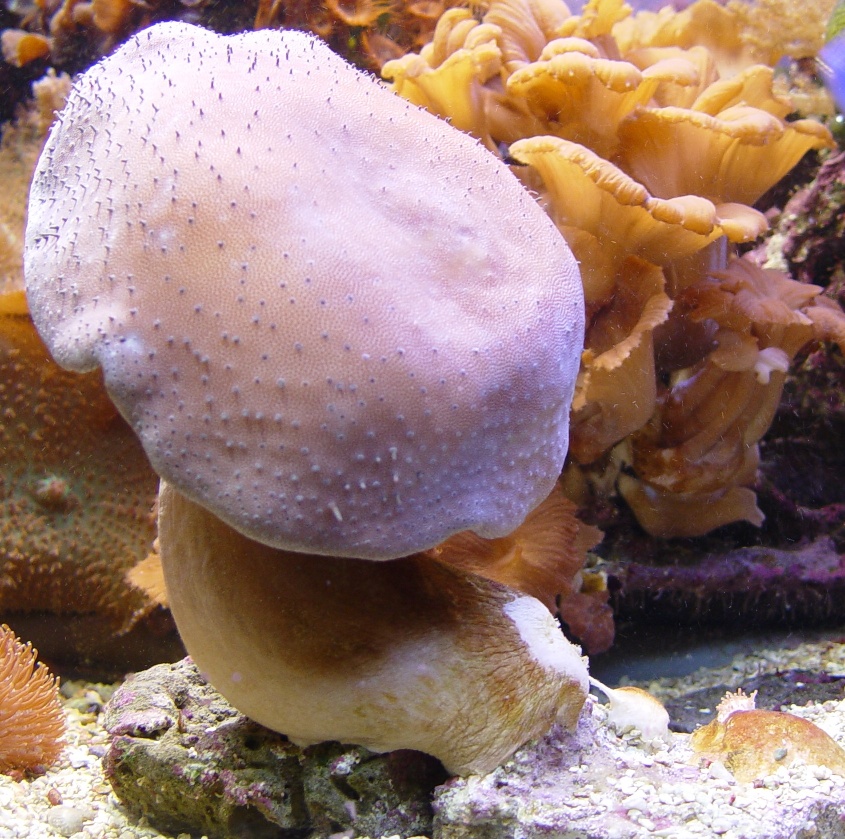People who are accustomed to fish tanks view events in the tanks on a time scale
measured in seconds. They watch the fish swim about, enjoy the motion and grace,
and then move away from the tank.
My reef tank has specimens that change over much longer periods of time. Corals
expand during the day and collapse at night. Some of them even "walk" around
the tank, but at speeds of perhaps an inch each year.
When I first set up the tank, I had no idea that these kinds of locomotion
existed, so it came as quite a surprise to me. My favorite such specimen is the
toadstool mushroom coral.
I purchased the specimen back in 1999: here it is shortly after purchase,
perhaps 2 inches tall and 2 inches in diameter.

Once it became settled in, it sent out many feeding polyps out. This is the
surface of the coral with the polyps withdrawn:

And here it is with the polyps out

Seen up close, the polyps are seen to have some structure, including a feeding mechanism at the tips

Sometimes the polyps are out like a huge head of hair

And sometimes the polyps are completely withdrawn. Sometimes the top is concave

And sometimes convex. For an animal that appears to be totally sedentary,
it is amazing how much the shape changes over periods of hours or days.

One day, it was pressed against the glass, I and I took this close-up picture of
the polyps as they were starting to be extruded from the main body of the animal

After a year or so, I noticed that it was moving on the rock on which I had
purchased it. Over the years, I had to find other rocks to place in front of
it, so that it did not walk off a rock entirely onto the sand. This picture
shows it "walking" towards the left. You can see two rocks beneath it, the one
on the right it is leaving, and the one on the left on which it is stepping up.
Left behind it are two small nubbins of coral material. In fact, you can see a
strand of live coral stretching between the main body and the nubbin just to the right.

Over time, those small pieces of coral turned into toadstool corals in their own
right. Here you can see the left-over material coating the rock, with hints of
the polyps just barely showing. The feather duster beneath them is also pretty.

Today, some seven years later, a large colony of "baby" corals has been left
behind by this slow journey:



